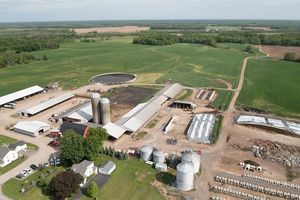H.R. 1 Enhances Safety Net and Restores Certainty for Farmers and Ranchers
 The recently advanced House of Representatives Bill H.R. 1 aims to bring long-term certainty to the agricultural sector. It extends key programs through 2031 and boosts agriculture program funding by $56.6 billion over the next decade. While H.R. 1 is a critical step in the process, the Senate is not required to address the House version or may modify it significantly. Let’s take a more in-depth look at what the bill contains.
The recently advanced House of Representatives Bill H.R. 1 aims to bring long-term certainty to the agricultural sector. It extends key programs through 2031 and boosts agriculture program funding by $56.6 billion over the next decade. While H.R. 1 is a critical step in the process, the Senate is not required to address the House version or may modify it significantly. Let’s take a more in-depth look at what the bill contains.
The legislation enhances the safety net for producers. Statutory reference prices for major covered commodities increase anywhere from 11 to 21%. A reference price escalator is scheduled to start in 2031, increasing reference prices by 0.5% annually on a compound basis. It is capped at 115% of the original statutory value. The legislation allows farmers to voluntarily realign their base acreage, potentially adding up to 30 million new acres for support eligibility.
Marketing assistance loan rates are increased to aid cash flow in low-price periods. ARC program updates increase the coverage threshold to 90% and raise the payment cap to 12.5%. For dairy, the Dairy Margin Coverage (DMC) program expands Tier I coverage to 6 million pounds per farm and offers a 25% discount for multiyear participation.
Crop insurance is still considered a cornerstone of the farm safety net. A new pilot insurance program for poultry growers has been authorized. The definition of a beginning farmer and rancher is expanded from 5 to 10 years of experience to match the USDAs definition. The beginning farmer and rancher premium subsidy has increased to 15 percentage points above the standard rate for the first two crop years and 10 percentage points for crop years three through 10.
H.R. 1 also extends USDA conservation programs, including EQIP, CSP and ACEP, through 2031. It redirects Inflation Reduction Act funds into the baseline of the farm bill rather than allocating them to new programs.
The legislation increases support for specialty crops and organic farming, boosting grant and pest control programs. Organic programs authorized include providing organic market data, improving the tracking of imports, and offering cost-share assistance for organic certification.
Livestock provisions expand disease and detection preparedness. It mandates $233 million annually from 2026 for vaccines, veterinary diagnostics and training of state responders to protect ranchers from outbreaks. The bill keeps USDAs Livestock Indemnity Program in place so ranchers can keep getting help when they lose livestock to extreme weather, predators or other eligible events.
Nearly 98% of farms and ranches are family-run businesses (like sole proprietorships, partnerships or S-corporations) that don’t benefit from the same permanent tax breaks big corporations received in 2017. H.R. 1 would help by keeping key tax relief in place and preventing higher taxes if current tax relief legislation expires in 2025.
